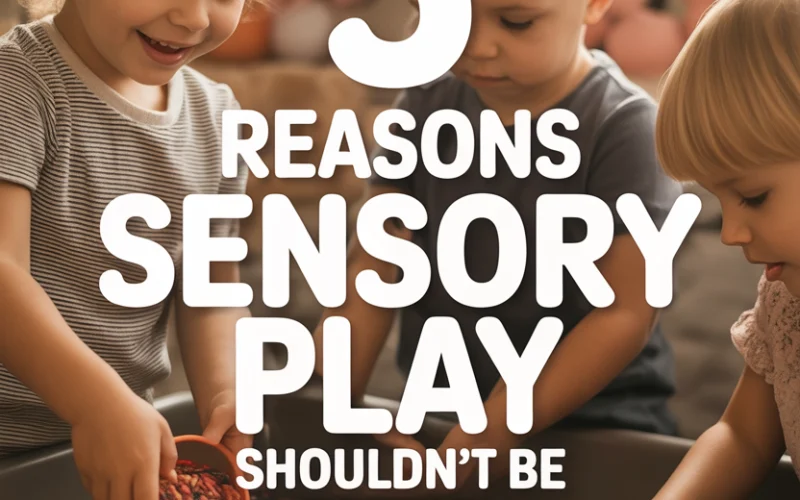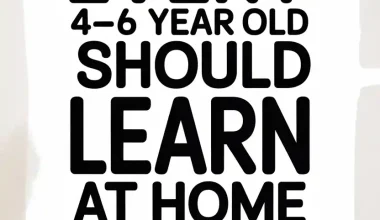Anyone who’s ever stepped barefoot on a rogue piece of kinetic sand knows sensory play has a way of making its presence known.
But let’s be honest—sometimes parents are tempted to skip it entirely, opting for fewer crumbs on the carpet and less glitter glued to the cat.
Here’s why it’s worth braving the mess.
1. Sensory Play Builds Brainpower (Without Flashcards)
No need for fancy apps or pricey “learning systems.” Sensory play is the original brain food. When children squish, pour, and scoop, their brains light up with new connections.
Playdough isn’t just a way to keep tiny hands occupied—it’s a neural fireworks display.
A study from the University of California found that children engaged in open-ended sensory activities show stronger problem-solving and critical thinking skills as they grow.
Even the American Academy of Pediatrics gets in on the action, crediting this kind of play with building the very foundation for future academic learning.
That’s right: all that puddle-splashing and mud-pie-making? Hard at work laying the groundwork for maths and reading later on.
2. It’s Like a Gym Session for Fine Motor Muscles
Think of all the skills packed into a single cup of rainbow rice or a tray full of pasta shapes. Scooping, pinching, pouring, threading—these are more than just fun ways to pass an afternoon.
They’re training sessions for the fingers and hands.
These small muscle skills matter. They’re the building blocks for tying shoelaces, wielding a pencil, and (eventually) conquering the school cafeteria’s trickiest juice-box straw.
Occupational therapists swear by simple activities like water play or using tongs to move pom-poms, which strengthen fingers and boost hand-eye coordination.
So the next time your toddler is wrist-deep in cloud dough, just picture those future neat handwriting skills in the making.
3. Emotional Regulation Gets a Major Boost
Parents of toddlers will agree: emotional meltdowns can appear out of nowhere. Enter sensory play, the unsung hero of self-soothing.
Tactile play (think slime, sand, water) gives children a physical outlet for big feelings. The repetitive motions of sifting, kneading, or swirling help regulate stress and bring about a sense of calm.
The National Autistic Society highlights sensory play as especially beneficial for kids who are easily overwhelmed or anxious.
And frankly, who among us hasn’t envied a child elbow-deep in a tray of beans, utterly at peace with the world? That’s emotional regulation in its purest form.
Set up a simple rice bin or a bowl of soapy water. Watch as your child sinks into their own little zen garden, recalibrating after a tough day.
4. Language and Social Skills Flourish (Even in a Puddle)
It’s easy to think of sensory play as a solo pursuit. But the sandpit at the park or the mud kitchen in the garden? Those are social learning laboratories.
When children share tactile experiences, they naturally chat, negotiate, and cooperate. Ever witnessed the complex diplomacy of three preschoolers with one bucket?
Those negotiations build language, empathy, and patience—not to mention a treasure trove of hilarious stories for future dinner parties.
Speech and language therapists often encourage families to use messy play as a vehicle for building vocabulary: sticky, squishy, rough, smooth—all those adjectives come alive when little hands feel them.
This classic study from Stanford found that early exposure to rich, descriptive language during play directly boosts vocabulary acquisition.
So while it may look like a sticky free-for-all, that shared tub of oobleck is setting the stage for classroom confidence and playground friendships.
5. Sensory Play Is the Ultimate Screen Detox
We’ve all had “one of those days” where the TV is the only thing standing between you and utter chaos. No shame in that.
But sensory play can break the spell in a way that actually recharges your child’s energy (and maybe your sanity).
Unlike passive entertainment, sensory play engages all the senses, snaps children into the present moment, and gives them a sense of agency.
Even a tray of ice cubes or a pile of autumn leaves can transform a cranky, screen-zapped child back into their creative, curious self.
Pediatricians recommend hands-on, real-world experiences as an antidote to screen fatigue, especially for young children.
Sensory activities are easy to set up, cost next to nothing, and don’t require WiFi. (Unless you count the inevitable call to the carpet cleaner.)
A quick bonus: sensory play often buys you a few moments of peace. Not quite a spa day, but in parenting terms, it’s close.
Making Sensory Play Simple (and Tidy Enough to Survive)
No one is suggesting you fill the living room with shaving foam or turn the bath into a ball pit every night. Sensory play doesn’t mean chaos.
Think damp sponges in a bowl, a handful of dried lentils, or a tub of homemade playdough. Even a walk outside to crunch through leaves or collect pebbles counts.
Here are a few sanity-saving tips from parents who’ve been there:
- Lay down an old sheet or shower curtain for quick clean-up.
- Use a muffin tin or tray to keep materials corralled.
- Store a “sensory kit” with rice, scoops, and jars out of reach, then whip it out when boredom strikes.
- For food-based activities, keep allergies in mind and supervise little ones who are still tasting everything.
- Involve kids in the set-up and clean-up—they’ll love the responsibility (and you’ll love not doing it all yourself).
Sensory play isn’t just an excuse for mess; it’s a rocket ship for development, a balm for big feelings, and a secret handshake for friendship.
And the best part? You don’t need a Pinterest-perfect set-up or an Instagrammable outcome.
You just need a child, a little patience, and maybe a broom.
Now, go ahead—bring out the beans. Your floors will forgive you, and your child’s growing brain will thank you later.





